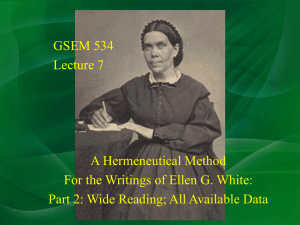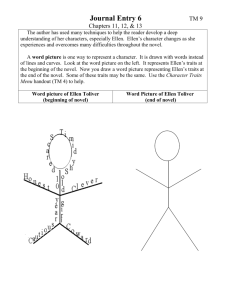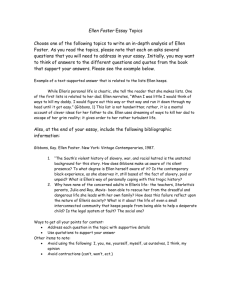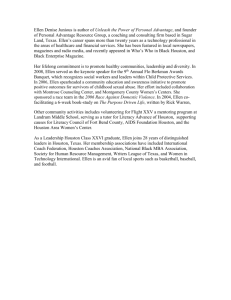Presentazione standard di PowerPoint
advertisement
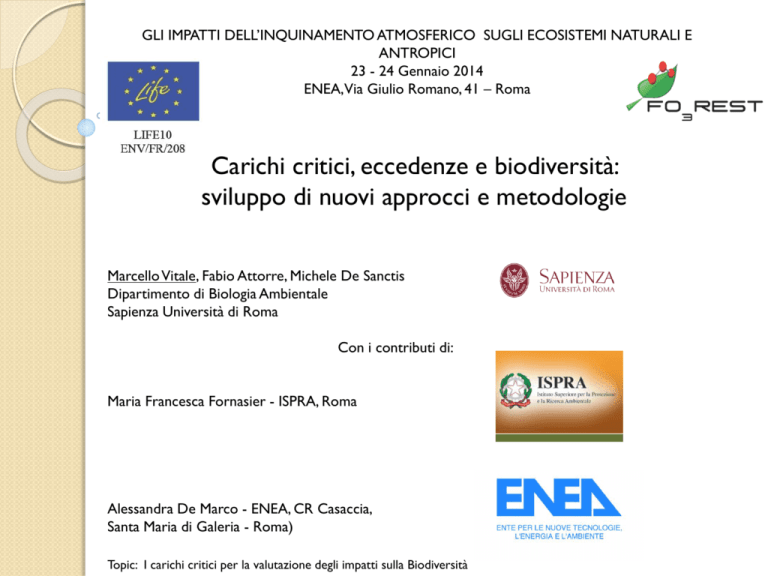
GLI IMPATTI DELL’INQUINAMENTO ATMOSFERICO SUGLI ECOSISTEMI NATURALI E
ANTROPICI
23 - 24 Gennaio 2014
ENEA,Via Giulio Romano, 41 – Roma
Carichi critici, eccedenze e biodiversità:
sviluppo di nuovi approcci e metodologie
Marcello Vitale, Fabio Attorre, Michele De Sanctis
Dipartimento di Biologia Ambientale
Sapienza Università di Roma
Con i contributi di:
Maria Francesca Fornasier - ISPRA, Roma
Alessandra De Marco - ENEA, CR Casaccia,
Santa Maria di Galeria - Roma)
Topic: I carichi critici per la valutazione degli impatti sulla Biodiversità
Rationale
Nitrogen emissions and deposition of nitrogen compounds have decreased
since 1990 but relatively little compared to sulphur emissions. Agriculture and
transport are the main sources of nitrogen pollution (EEA, 2007).
In addition, nitrogen components can lead to eutrophication of ecosystems.
When this pollution exceeds certain levels ('critical load'), it is damaging to
biodiversity. Critical load exceedance is still significant(1).
(1) The critical load of nutrient nitrogen is defined as 'the highest deposition of nitrogen as NOX and/or NHY below
which harmful effects in ecosystem structure and function do not occur according to present knowledge' (ICP, M&M,
2004).
Available at: www.eea.europa.eu/publications/eea_report_2007_2.
Rationale
A critical load is defined as “a quantitative estimate of an exposure to one or more pollutants
below which significant harmful effects on specified sensitive elements of the environment do
not occur according to present knowledge” (Nilsson and Grennfelt, 1988).
Exceedances of critical loads by current or future nitrogen loads indicate risks for adverse
effects on biodiversity.
Rationale
Excess nitrogen is one of the major threats to biodiversity. Excessive levels of
reactive forms of nitrogen in the biosphere and atmosphere constitute a major
threat to biodiversity in terrestrial, aquatic and coastal ecosystems.
On land it causes loss of sensitive species and hence biodiversity by favouring a
few nitrogen tolerant species over less tolerant ones.
In coastal waters it leads to algal blooms and deoxygenated dead zones in
which only a few bacteria may survive.
Questions
Is it possible to evaluate a plant population changes induced by climate and air
pollutants into the plant community?
How are actual biodiversity indices useful for this assessment, taking into
account limited database either in time or in space?
Study areas
Study areas
Kg/ha/y
Test sites location
Nitrogen depositions in Italy
Study areas
Categ. Box & Whisker Plot: Exceed BSC N
10
8
*
6
4
*
Significant differences among N
exceedances (above, BOF N and under
BSC N canopy) of the monitored sites
have been found by ANOVA test
0
-2
-4
*
-6
-8
-10
-12
LOM1
ABR1
LAZ1
Mean
Mean±SE
Mean±SD
Site
8
6
Categ. Box & Whisker Plot: Exceed BOF N
*
4
2
*
0
Exceed BOF N
Exceed BSC N
2
-2
-4
*
-6
-8
-10
-12
-14
LOM1
ABR1
Site
LAZ1
Mean
Mean±SE
Mean±SD
Study areas
Temporal trends of exceedances
above (BOF N) and under canopy
(BSC N) calculated for the three
test sites
Box Plot of Exceed BOF N grouped by Years; categorized by Site
Exceed BOF N
12
10
8
6
4
2
0
-2
-4
-6
-8
-10
-12
-14
2000
2002
2004
2006
2008
2001
2003
2005
2007
2009
2000
2002
2004
2006
2008
2001
2003
2005
2007
2009
Site: LOM1
Site: ABR1
12
10
8
6
4
2
0
-2
-4
-6
-8
-10
-12
-14
Mean
Mean±SE
Mean±2*SD
2000
2002
2004
2006
2008
2001
2003
2005
2007
2009
Site: LAZ1
Box Plot of Exceed BSC N grouped by Years; categorized by Site
Years
Exceed BSC N
12
10
8
6
4
2
0
-2
-4
-6
-8
-10
-12
-14
Critical Loads for the three test sites
Sites
2000
2002
2004
2006
2008
2001
2003
2005
2007
2009
2000
2002
2004
2006
2008
2001
2003
2005
2007
2009
Site: LOM1
Site: ABR1
12
10
8
6
4
2
0
-2
-4
-6
-8
-10
-12
-14
2000
2002
2004
2006
2008
2001
2003
2005
2007
2009
Site: LAZ1
Years
LOM 1
ABR 1
LAZ 1
Mean
Mean±SE
Mean±2*SD
conecofor ispra
kg/ha/yr kg/ha/yr
16.40
10.19
11.48
16.93
13.15
10.42
Study areas
LOM1
The values of the diversity indices are not always comparable between them
and depend on the extent to which they can actually vary.
The evenness is a measure of diversity normalized on a fixed scale (e.g. from
0 to 1) and allows to carry out these comparisons.
From the Shannon-Wiener index, the Pielou’s evenness can be defined as:
Ellenberg, in a series of publications (Ellenberg 1979, 1988; Ellenberg et al. 1991), defined a set
of indicator values for the vascular plants of central Europe. These have been widely used,
both in central Europe and in adjacent parts of western Europe. The basis of indicator values is
the realised ecological niche. Plants have a certain range of tolerance of temperature, light, soil
pH, and so on. If we wish to make inferences about the ecological conditions pertaining at a
site, much useful information can be obtained from the flora. These values are not i.e. mean pH
values, but are on an arbitrary scale reflecting soil pH though not directly based on
measurements. However, an advantage of indicator values is that they may be more sensitive
to the requirements of plants than is a selected physical variable.
Categ. Box & Whisker Plot: Ellen. Soil N
Categ. Box & Whisker Plot: Ellen. Soil pH
6.0
6.6
*
6.4
5.8
6.2
5.6
*
*
6.0
5.8
Ellen. Soil pH
Ellen. Soil N
5.4
5.2
5.0
5.4
4.8
4.6
4.6
4.4
LOM1
ABR1
LAZ1
*
5.2
5.0
*
4.8
5.6
4.4
Mean
Mean±SE 4.2
Mean±1.96*SE
*
LOM1
Site
LAZ1
Site
Categ. Box & Whisker Plot: Ellen. Temp
Categ. Box & Whisker Plot: Ellen. Cont
3.8
ABR1
Mean
Mean±SE
Mean±1.96*SE
6.2
*
*
6.0
3.6
5.8
5.6
Ellen. Cont
3.2
5.0
4.6
4.4
2.8
4.2
2.6
LOM1
ABR1
Site
*
5.2
4.8
*
3.0
5.4
Ellen. Temp
*
3.4
LAZ1
Mean
4.0
Mean±SE
Mean±1.96*SE
*
LOM1
ABR1
Site
LAZ1
Mean
Mean±SE
Mean±1.96*SE
Categ. Box & Whisker Plot: J=H'/Hmax
Categ. Box & Whisker Plot: H'dunestd
1.0
0.8
*
0.7
*
0.6
H'dunestd
J=H'/Hmax
0.9
*
0.5
0.4
0.8
*
0.3
0.2
0.7
LOM1
ABR1
LAZ1
Mean
0.1
Mean±SE
Mean±1.96*SE
LOM1
Site
LAZ1
Mean
Mean±SE
Mean±1.96*SE
Site
Categ. Box & Whisker Plot: BSC N
18
ABR1
Categ. Box & Whisker Plot: BOF N
16
*
15
*
16
14
13
14
BOF N
BSC N
12
12
11
10
10
9
8
8
7
6
LOM1
ABR1
Site
LAZ1
Mean
Mean±SE 6
Mean±1.96*SE
LOM1
ABR1
Site
LAZ1
Mean
Mean±SE
Mean±1.96*SE
1999
2000
2001
2002
2003
2004
2005
2006
2008
2009
1999
2000
2001
2002
2003
2004
2005
2006
2007
2008
2009
1999
2000
2001
2002
2003
2004
2005
2006
2007
2008
2009
0.5
BOF N
1999
2000
2001
2002
2003
2004
2005
2006
2008
2009
1999
2000
2001
2002
2003
2004
2005
2006
2007
2008
2009
1999
2000
2001
2002
2003
2004
2005
2006
2007
2008
2009
0.82
BSC N
0.92
0.90
20
0.84
0.80
0.78
0.72
0.70
LOM1
LOM1
ABR1
ABR1
LAZ1
LAZ1
Years
Site
0.2
0.1
Years
Site
Raw Data
Connect Means
0.9
22
0.8
20
0.7
18
0.6
Raw Data
Connect Means
2000
2001
2002
2003
2004
2005
2006
2007
2008
2009
2000
2001
2002
2003
2004
2005
2006
2007
2008
2009
2000
2001
2002
2003
2004
2005
2006
2007
2008
2009
J=H'/Hmax
22
2000
2001
2002
2003
2004
2005
2006
2007
2008
2009
2000
2001
2002
2003
2004
2005
2006
2007
2008
2009
2000
2001
2002
2003
2004
2005
2006
2007
2008
2009
H'dunestd
0.94
Variability Plot of J=H'/Hmax
Variability Plot of BSC N
0.88
18
0.86
16
14
12
10
0.76
8
0.74
6
4
2
LOM1
Variability Plot of H'dunestd
LOM1
ABR1
ABR1
LAZ1
LAZ1
Years
Site
Site
Raw Data
Connect Means
Variability Plot of BOF N
16
14
0.4
12
0.3
10
8
6
4
Years
Raw Data
Connect Means
Site=LOM1 Correlations Marked correlations are
significant at p < .05000 N=9
H'
J
Exceed
0.27
BSC N
0.26
Exceed
0.33
BOF N
Ellen.
Light
Ellen.
Temp
Ellen.
Cont
0.10
-0.03
0.17
0.49
0.06
-0.15
0.29
H'dune
H'dune
std
0.26
0.27
0.59
-0.39
0.09
-0.27
Site=ABR1 Marked correlations are significant at p
< .05000 N=10
Site=LAZ1 Marked correlations are significant at p
< .05000 N=10
H'
J
H'dune
H'dune
std
H'dune
H'dune
std
0.30
0.40
0.36
Exceed
BSC N
0.51
0.49
-0.08
-0.16
-0.39
-0.40
0.01
0.06
Exceed
BOF N
0.51
0.44
0.31
0.21
Ellen.
Light
0.12
0.41
0.25
0.21
Ellen.
Light
-0.56
-0.47
-0.24
-0.13
Ellen.
Temp
-0.00
0.16
-0.15
-0.14
Ellen.
Temp
-0.67
-0.72
0.29
0.39
-0.22
-0.05
-0.05
-0.04
Ellen.
Cont
-0.90
-0.88
0.01
0.16
-0.15
Ellen.
Cont
-0.13
0.19
0.01
-0.02
Ellen.
Soil
Moist
0.78
0.75
0.08
-0.05
0.70
-0.41
-0.02
H'
J
Exceed
BSC N
-0.05
Exceed
BOF N
Ellen.
Soil
Moist
0.07
0.10
0.07
0.12
Ellen.
Soil
Moist
Ellen.
Soil pH
-0.16
-0.32
0.07
-0.07
Ellen.
Soil pH
0.00
0.12
-0.13
-0.16
Ellen.
Soil pH
0.26
0.29
-0.34
-0.37
Ellen.
Soil N
0.01
-0.06
0.26
0.20
Ellen.
Soil N
0.60
0.57
0.25
0.17
Ellen.
Soil N
0.21
0.16
-0.27
-0.30
Correlation analysis showed that generally diversity indices did not correlate with the
Ellenberg’s indicators except H’ in the LAZ1 site, but H’dunestd correlated with N
exceedances above canopy in LOM1.
The application of more advanced statistical analyses (such as the
Random Forest in the Data Mining statistical tools) did not result into a
clear causal pattern between biodiversity indices and environmental and
pollution factors. Likely this was due to a very poor dataset.
Nox
Nred
It should be taken into
consideration that N
depositions may have
different distributions
along the peninsula
regard their oxidative
state and, as a
consequence, different
effects on vegetation
(De Marco et al., 2013)
% of the total
De Marco, Screpanti, Attorre, Proietti, Vitale (2013) Assessing ozone and nitrogen impact on net primary
productivity with a Generalised non-Linear Model. Environmental Pollution, 172: 250-263.
REMARKS
These simple analyses highlighted that different diversity indices (one based
on the species proportion and the other based on proportional coverage
area) could suggest different trends, which were not in correlation with
climatic data and N depositions for three herbaceous communities growing
under different ecological niches;
It seems that one decade of data it is not sufficient for assessing a change in
herbaceous community’s composition;
Inferences made on the air pollutant-induced effects in affecting plant
community’s composition should be carried out with extreme caution;
REMARKS
Wide database with plant community information, air pollutant and climate
should be used for non linear statistical analyses, in order to provide inferring
statistical models;
The spatial pattern of plant distribution should be taken in consideration when
plant diversity indices are applied for different monitoring plots. Actually, this
structural parameter is not considered;
The application of different biodiversity indices and ecological indicators should
be applied in extensive way to other European herbaceous plant communities,
in order to assess if air pollutants, and/or climate, and or anthropogenic
activities are causal effects for a changing plant communities.
Grazie per l’attenzione !
